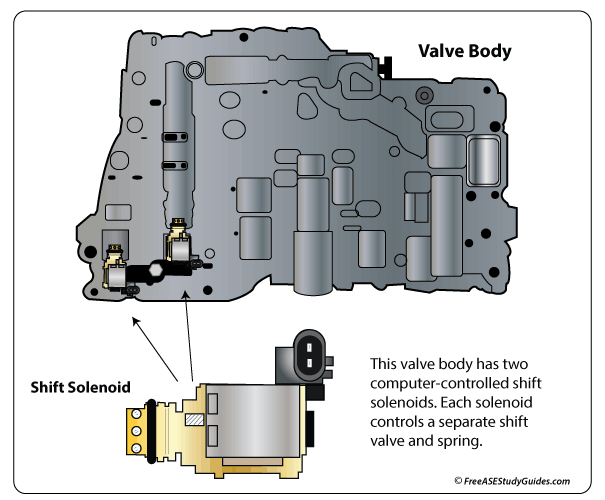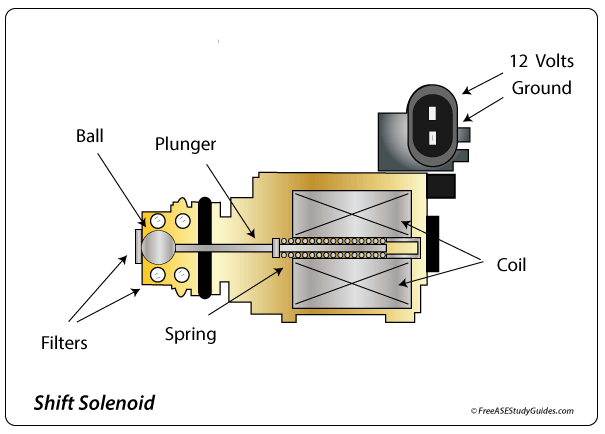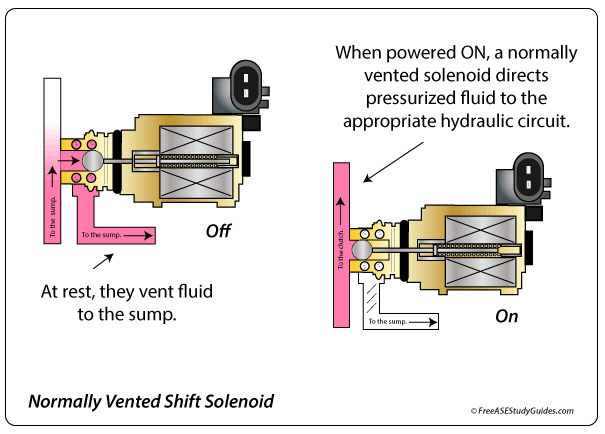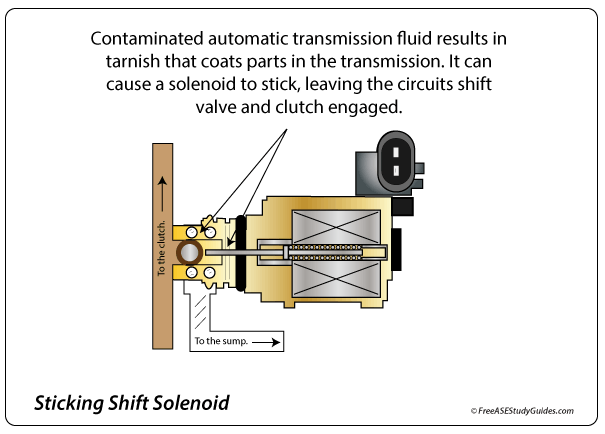Transmission Shift Solenoids

Electronically controlled transmissions use shift solenoids and valves to control fluid flow. Linear (standard on/off solenoids) have only two positions, either on or off. The TCM activates these solenoids based on inputs from both engine and transmission sensors.

They consist of a coil of fine wire wrapped around a spring-loaded plunger that, when energized, moves, either opening or closing a hydraulic circuit. When powered down, the plunger is forced by a spring to its at-rest position. Many modern transmissions use PWM (pulse width modulated) solenoids adjusting flow by pulsing the circuit on and off.
Shift Solenoid Operation

A solenoid can be normally open (vented) or normally closed, depending on the application. A normally vented solenoid directs fluid to the sump when it's off and to the clutch or servo when it's powered on.
Sticking Shift Solenoids

Unchanged and contaminated ATF covers the transmission case and internal components with tarnish and debris. It clogs solenoids and valves, causing them to stick open or closed. A sticking solenoid will cause a vehicle to remain in gear, neutral, or not upshift.
Circuit Checks

Check the circuit and solenoid for electrical problems. A short-to-ground occurs when an unwanted flow of electrons detours to ground before the circuit's desired load. Check for a frayed wire touching the vehicle's dash, frame, or transmission. An open can occur anywhere in an electrical circuit. There is no current when a circuit is open. When the circuit is open, often caused by a bad connection or a broken wire, the solenoid will not function.